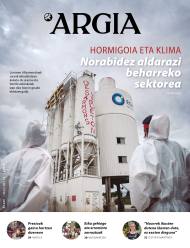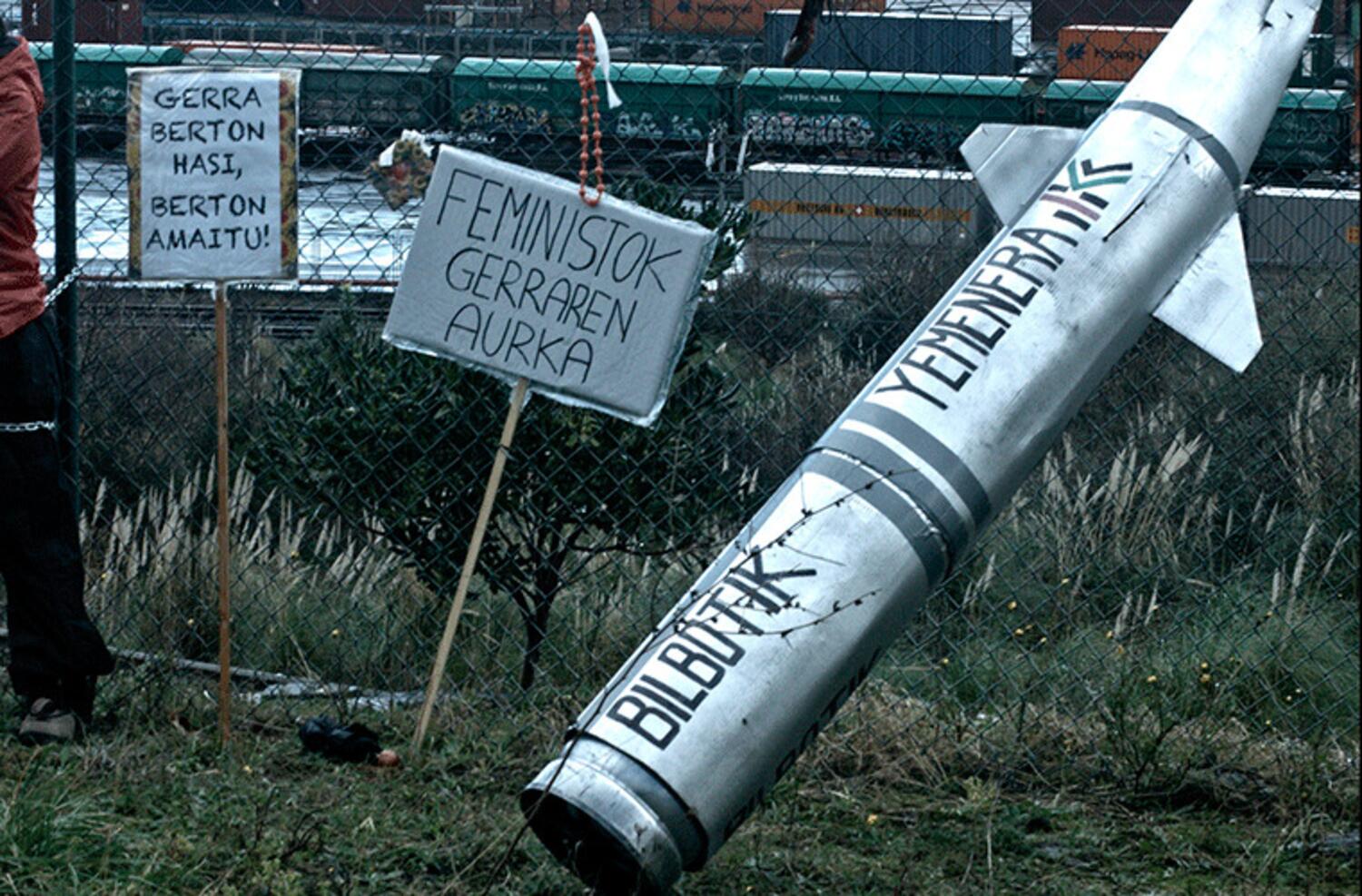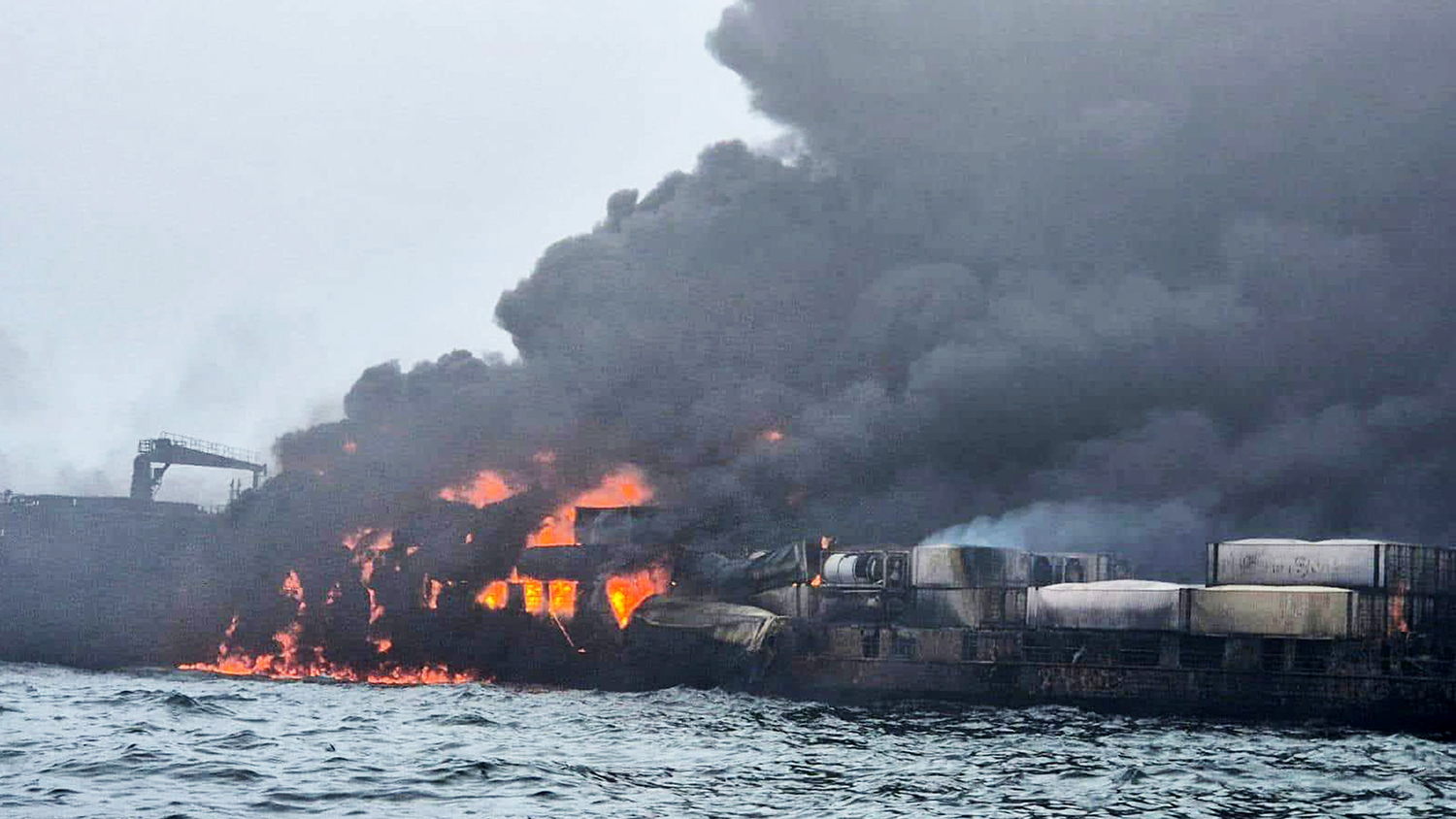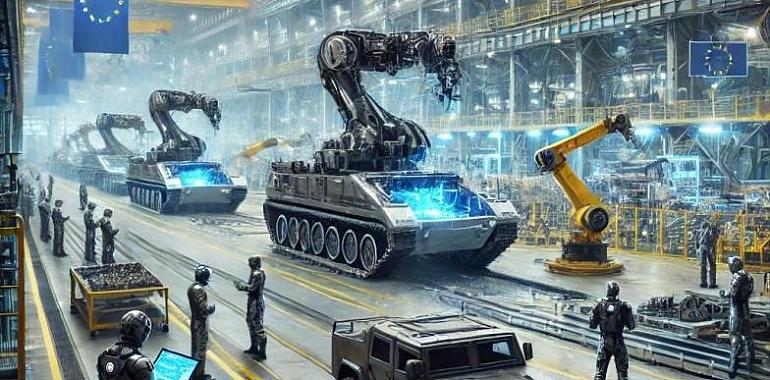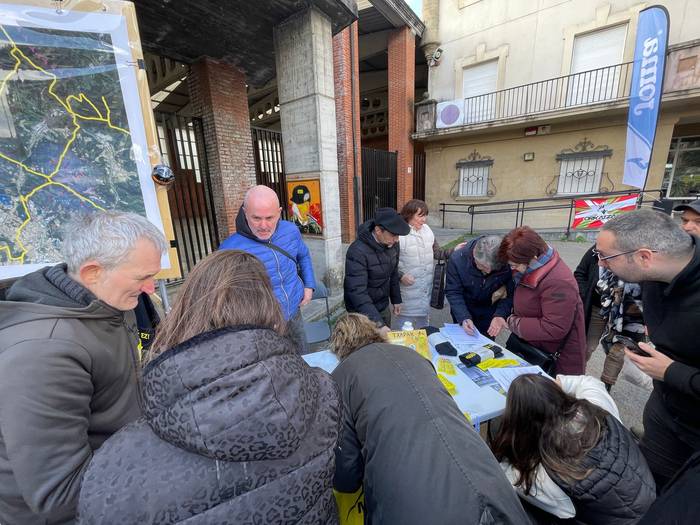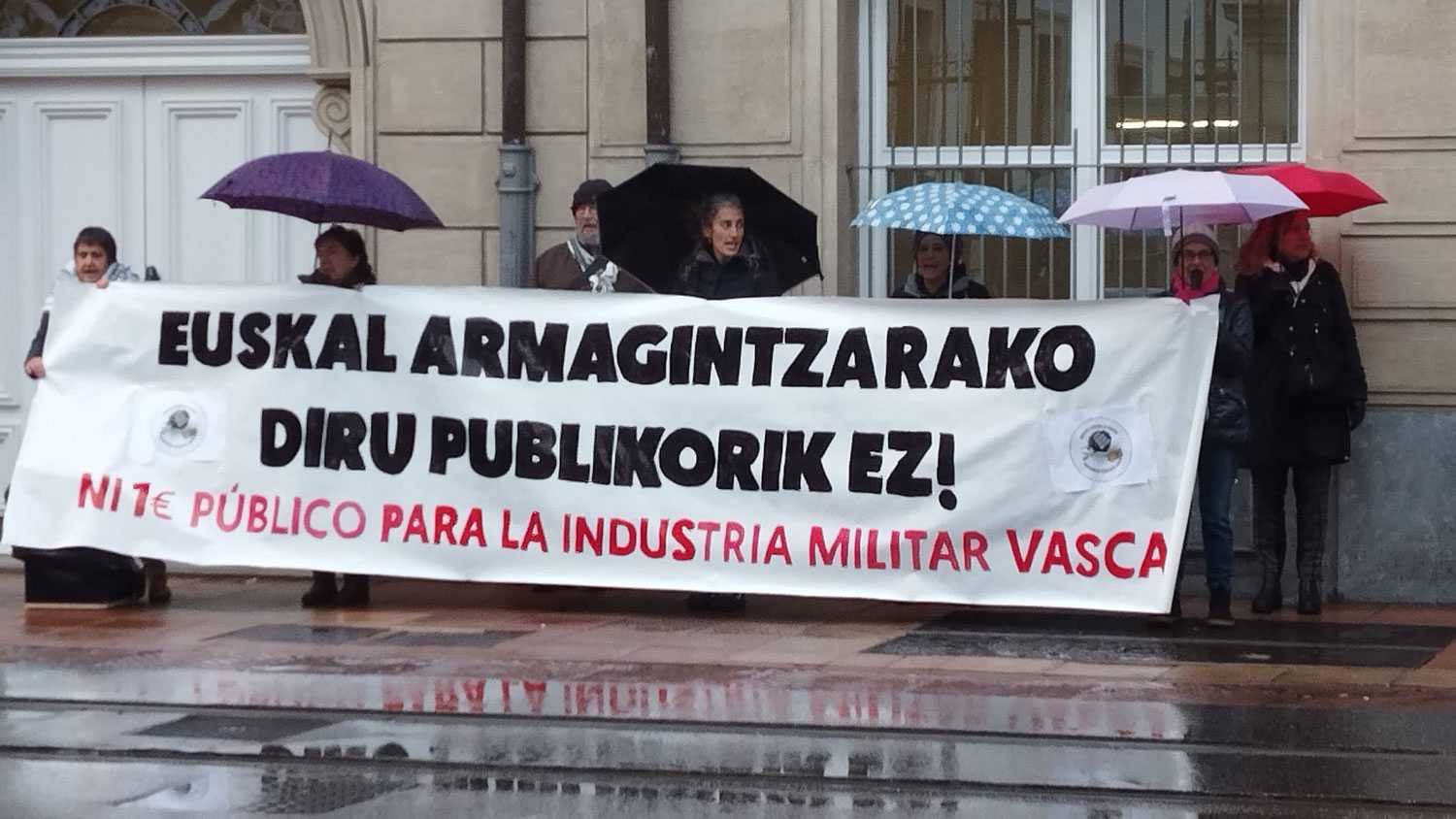If concrete were a town -- it would be the third most polluting country in the world.
- "Lafarge and its accomplices [the concrete sector] will not remain inside if they are forced to do so," said the Earth Survey in explaining the network's action in December last year. Lafarge is the first concrete and cement producer in the world that, turning its back on the ecological transition, continues to cover the soil with betons. 25 million kilometers of new roads planned worldwide by 2050. Linked to the December action, the French police arrested 15 activists against this grey world and interrogated them for four days last week to leave them free and without police control. In this warm present, ARGIA has wanted to look at the concrete sector.
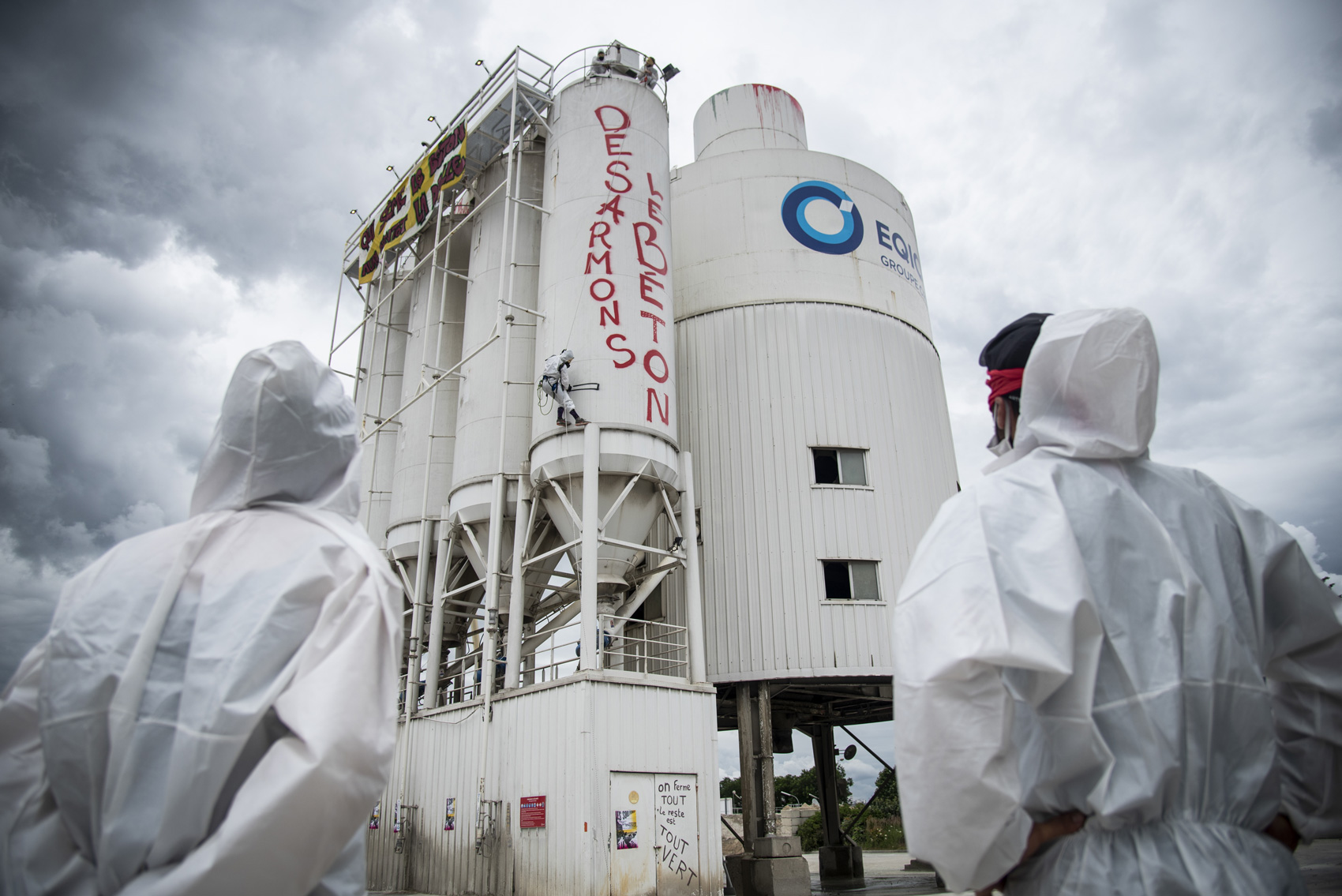
On 5 June, some fifteen activists, including a baiu and a hendaye, were arrested for sabotage at a plant of the multinational producer of lafarge, cement and beton. In the end, they were left free and without judicial control, and the Earth Uprising denounced the "dangerous authoritarian leadership" adopted by the authorities. Radical ecologists and Earth Uprisings are the "eco-terrorist" network in the eyes of the French Government. This was defined by the Interior Minister, Gerard Darmanin, 5,000 demonstrators united at the end of last October to denounce the project of megabassines or large abattoirs for the agro-industry.
In this period, they are aimed at those who fight against soil artificialization, that is, their concrete coating. On 10 December, 200 activists met at the French plant Lafarge de Bouc-Bel-Air to denounce the heated activities of this multinational. The same day, the Earth Uprisings broadcast their political reading: "Lafarga and his accomplices hear nothing of the wrath of generations that leave them without a future in a world damaged by their damage. Their machines, silos and mixers are the weapons that kill us. They will not be incurable if they are forced to do so. We will therefore continue to dismantle these disaster infrastructures. We appeal to all those who stand up for the Earth to occupy, block and disarm concrete."
10% of global gas emissions come from construction and 52% from concrete production
We have focused on the concrete sector to learn more about its environmental impact. Obviously, we could have Lafarge as a subject of study, because we know it doesn't have everything beautiful. He was sanctioned as an "accomplice of crimes against humanity" for donating millions to institutions like the Islamic State for at least 2013 and 2014 in exchange for setting up a factory in Syria. We could talk about several of his air-conditioned projects. But we have opened our eyes and looked at the sector, without undermining the influence of Lafarga, which is the first force of the sector worldwide.
If concrete were a town, it would be the third pollutant in the world after the US and China.
Concrete from third countries polluting
If we know some figures, we soon represent the impact of this production. Suppose that 10% of gas emissions worldwide come from the construction sector, and in them 52% is associated with concrete production. The production of one tonne of concrete deduces one tonne of CO2 and knows that worldwide 150 tonnes per second are produced. When ecological transition is essential, the interpellation of Lafarge and his peers is sensible. In the report Sortir du tout-béton, le défi des architectes ("Leave the oro-betoia model, the challenge of architects"), published by Mediaparte in 2021, we can read: "In short, between steel Arcelor-Mittal, the main producer of iron coated by concrete, and Lafarge-Holcim emit both CO2 and France into the atmosphere."
There is no matching of the production needed to meet the climate challenge and ensure the conservation of ecosystems, yes or yes, and in addition “alternative betons” are not spreading
With these numbers it is hard to understand how to talk so much about the concrete and cement sector. How can we not talk about both oil and pesticides? Why is it so present at climate summits as COP27?
But the Earth's Elevations, thanks to the information and interpellation work carried out by Greenpeace or Extinction Rebellion, have, by necessity, begun to match their own little. For example, the book Béton ecologique et construction durable ("Sustainable construction and ecological beton") by Floren Dubois, responsible for sustainable production in Lafarge. However, as we shall see, there is no denying the tendency to paint green washing or the existing heated behaviour.
Concrete consists of water, sand and gravel that bind together by the cement, responsible for almost 90% of the carbon footprint of the beton. Decarbonization of concrete refers, therefore, to cement decarbonization. It is important to know that to make this cement a mixture of clays and limestone is heated for hours and at a temperature of 1,200 degrees. Thus, we obtain the clinker, which contains between 80 and 100% of the most used components of Portland cement. The problem is that its production has serious consequences for the climate: by burning, the limestone releases huge amounts of CO2. Two thirds of the cement's carbon footprint comes from this process.
Thus, industrialists in the sector try to develop carbon catches in order to dye their emissions. Among other things, they intend to veto part of CO2 or take advantage of carbon dioxide in the drying of concrete.
Lie and manipulation of "green cement"
Ways are also opened to reduce or eliminate the amount of clinker, replacing it with more sustainable components, such as steel waste. There's more and more talk about low-carbon cement. It says that the term is pure the author of the article Le "béton vert", me of the ecologique transition, fait chou blanc ("The green beton", the failure of the ecological transition weapon"), precisely because it legally has no definition or regulation. This term is used to taste, knowing that it is very difficult to know the production process of each producer. Researcher Matthias Devreton studied these alternatives and drew conclusions in the Le vrai du faux béton bas carbone report ("Truth about the false low carbon veto"). Suppose that the industrialists consider 0 the ecological impact of the replacement steel garbage from the clinker. Alta, following data from the international steel organization World Steel Association, the researcher states: "This serves them to deliver excellent environmental results, but their real impact is three times greater."
.jpg)
There is no matching of the production needed to meet the challenge of climate and ensure the preservation of ecosystems, and also the "alternative betons" are not being expanded because of their high productive cost. Because in the end it continues to open up with an unlimited capitalist logic. It is, and of course, no better than a construction to increase gross domestic product. The TAV or the renewal of the road, there is also the will to sustain growth in the background.
Symbol of modernity, is the main component of urbanism extended since World War II. In the name of "modernisation" and "development", the peoples of the South follow the same path as the Westerners, normal. Asia and Africa are at the forefront of concrete, which among them has multiplied cement production by four since the 1990s. Notice, it's a material used in most of the world, more than plastic and iron. Because in the hegemonic imaginary a people is modern for its infrastructures and large buildings, and because a person goes "on the right path" and apparently "well economically" when he builds a private house.
“Our way of doing it is absolutely dismissed. We must change not only materials, but also techniques. We must be much more radical”
P. Architect Madec
German philosopher Anselm Jappe, published in 2020, Béton, me of massive construction of the capitalist ems ("The Beton, a weapon for the massive construction of capitalism") is an interesting book to realize its capitalist character. In essence, according to the anti-corruption NGO Transperency International, the concrete sector is the one that causes the most corruption, rather than in armaments, mining or construction.
The generalised eco-impact meter, CO2eq or CO2 equivalent, does not take into account the negative impacts on the ecosystem and resource depletion. Each year, concrete needs between 10% and 40 billion tons of sand and rubble (the future of sand is currently questioned by this overexploitation, with an average of 18 kilos per person per day according to the Ademe structure, mainly for cement). How not to mention the green spaces definitely covered and the faunas and flora disappeared from them. Every year, 695,000 kilometers are built around the world. Between now and 2050, 25 million new kilometers will be built.
Here there is no ecological transition, the beton remains strong, although it goes against the recommendations of the Intergovernmental Panel on Climate Emergencies (GIEC). Let the architect Philippe Madec listen to the recommendations of the "eco-terrorists" group Earth Uprisings: "Our way of doing, that of the last century, is utterly delegitimized. We must change not only materials, but also techniques. We have to stay in doubt, we have to be much more radical."
Dakota Access oliobidearen kontrako protestengatik zigortu du Ipar Dakotako epaimahai batek erakunde ekologista, Energy Transfer Partners enpresak salaketa jarri ostean. Standing Rockeko sioux tribuak protesten erantzukizuna bere gain hartu du.
Trumpen garaipenak, Ukrainako gerraren birkokatze geopolitikoa eragiteaz gain, Europaren apustu belikoa agerian utzi du.
Mikel Jauregi Industria sailburuaren ustez, euskal enpresek “lan ona” egin dezakete Europaren “segurtasun estrategia babesten”. Eusko Jaurlaritzako bozeramaile Maria Ubarretxenak, berriz, berrarmatze asmoek “aukera berriak” ekar ditzaketela... [+]
Ukraina da munduan arma gehien erosten dituen herrialdea; munduko erosketa guztien %8,8. Merkatuaren ia erdia kontrolatzen duena, berriz, AEB dira: Europak erosi dituen armen erdia baino gehiagok jatorri estatubatuarra dute.
Petrolio-ontzi batek eta zamaontzi batek elkar jo dute astelehen goizean Ipar Itsasoan, Ingalaterrako ipar-ekialdean. Talkak Jet-A1 erregaia zuen petrolio-ontziaren tanke bat apurtu du eta kezka da nagusi, izan ditzakeen ondorio ekologikoengatik.
Europar Kontseiluak onartu du Ursula Von der Leyenek gastu militarrean proposatu duen 800.000 milioi euroko gastuarekin aurrera egitea. Horretarako bi arrazoi nagusi argudiatu ditu: Errusiari aurrea egitea eta Europar Batasunak aurrerantzean bere burua AEBen babes militarrik... [+]
Laudion, Aiaran eta Okondon izango du eragina energia azpiegiturak eta plataformaren aburuz, proiektuak eta ingurumen-inpaktuaren azterketak gabezia garrantzitsuak dituzte.
Ursula Von der Leyen Europako Batzordeko presidenteak Europa berrarmatu plana aurkeztu du, kontinentea "erresilientea eta segurua" bihurtzea xede duena. Bost zati ditu planak, eta estatu kideek 150.000 milioi euro jasoko dituzte mailegutan. Arau fiskalak moldatuko... [+]
2021etik 2025era isuriak %15ean murriztu behar zituen industriak. Ursula Von Der Leyenek automobilgintzaren sektorearen eskutik ekintza plan bat aurkeztuko du martxoaren 5ean. Oraindik erabakia hartua ez badago ere, Europar Batasunak sektorearen eskaerak onartuko dituela diote... [+]
Euskal Herriaren industriaren etorkizuna ezin dela "heriotzaren, odolaren eta armen gainean" eraiki aldarrikatu dute mobilizazioaren antolatzaileek. Euskal erakundeen nahiz alderdi politikoen "isiltasuna" salatu dute.
In mid-January, the Cedarras Forum presented the report Euskadi and the European Union, the shared destiny of prosperity and competitiveness. It contains recommendations for the PPAs, taking as a reference the reports submitted by Draghi and Letta for the European Union.
Based... [+]
Pilar Calcada is part of the Cedars group. On January 15th, the group called to take advantage of the “excellent opportunity” that will exist in the coming years to boost the arms industry, in an ostentatious event that resonated a lot. According to the study of the... [+]









